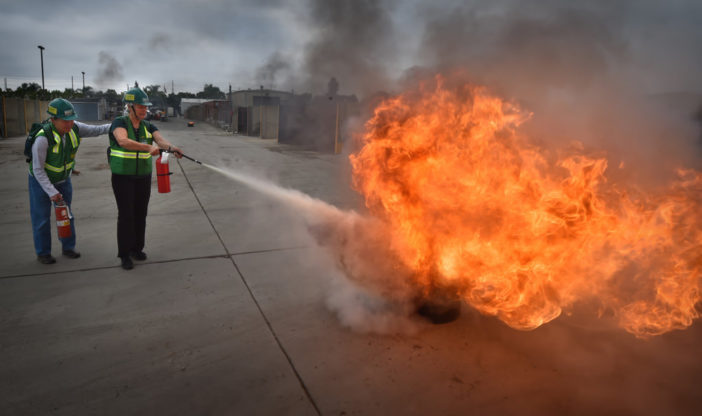One Community Emergency Response Team volunteer gently walked an elderly woman out of the building while asking her name.
Another asked a young boy lying on a red tarp outside: “Is it OK if I check you over a little bit?”
Meanwhile, Orange City Fire Department Arson Investigator Anthony Gutierrez, a CERT instructor, checked in with the team.
“Is everybody getting treated?” he asked.

City of Orange CERT volunteers gather with Mayor Teresa “Tita” Smith, front center, and personnel from the Orange PD and Orange Fire Department as CERT of Orange celebrates its two-year anniversary June 7.
Photo by Steven Georges/Behind the Badge OC
Set up to simulate as closely as possible a real-life disaster situation (a large earthquake with a collapsed building), the June 7 event was part of regular training scenarios for CERT volunteers. But this event was special in that it also marked two years that the volunteer-based, disaster-relief training program was started up by the City of Orange.
“It’s so rewarding to watch all of you embrace the training and the exercises,” CERT coordinator and Orange Police Department Crime Prevention Specialist Michelle Micallef told the hundred or so volunteers gathered at the Orange Department of Public Works yard for the celebration and training. “In less than two years, 250 individuals have completed the certification training.”
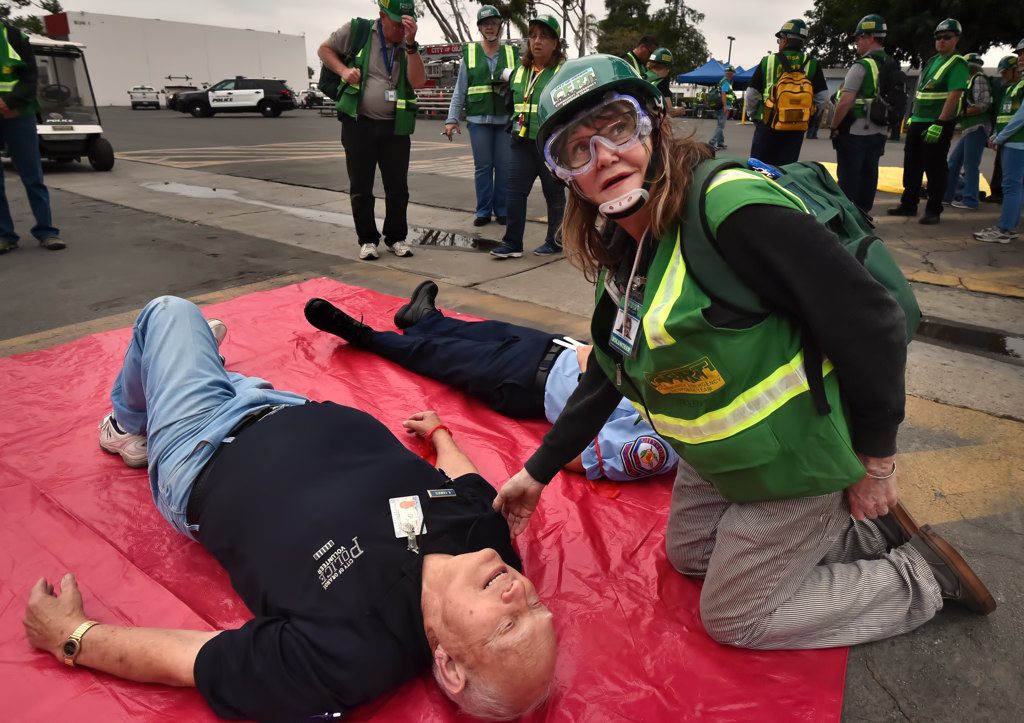
Orange CERT volunteer Christine Cervenka tends to Orange PD Volunteer Keith Fawver during a medical triage training exercise.
Photo by Steven Georges/Behind the Badge OC
The oldest certified volunteer is 88 and the youngest is 23, she said. And many of the volunteers continued on after basic training to receive more advanced coursework to become CERT Mutual Aid Responders – there will be 50 by summer’s end. The volunteers have participated this year in many exercises, including one with the American Red Cross and another with the local SWAT team.
Orange Mayor Teresa “Tita” Smith also addressed the volunteers.
“I was in the very first class and I was so pleased to do that,” she said. “So I’m a grandma like a lot of you here…I really want to make the plea that we get our kids involved and our grandkids involved.”
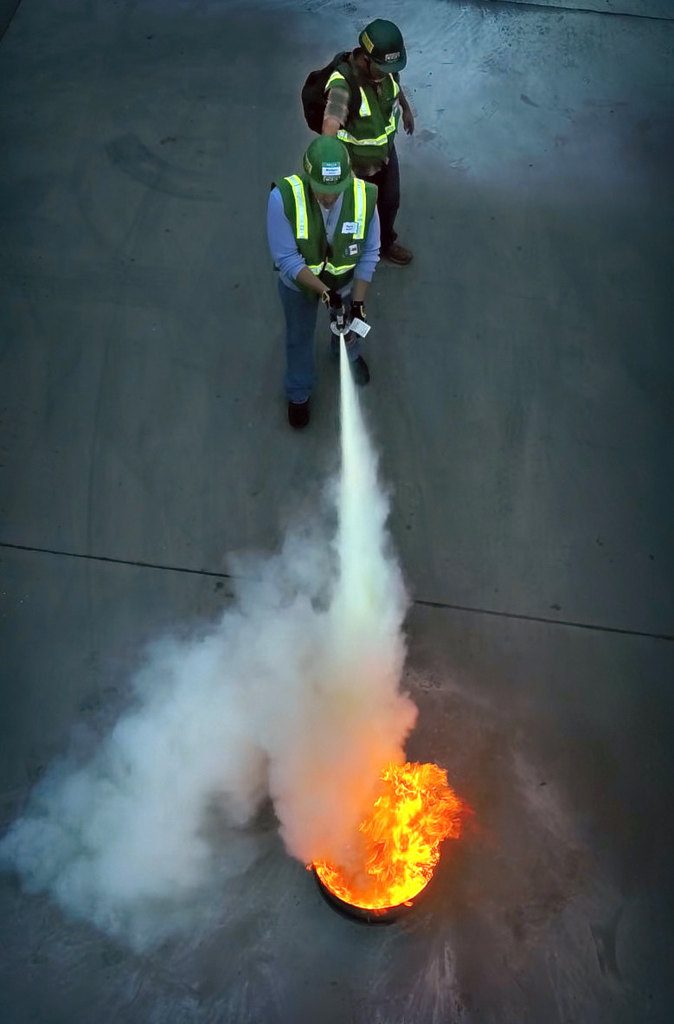
Orange CERT volunteers put out a test fire during a training session.
Photo by Steven Georges/Behind the Badge OC
Orange Chief of Police Thomas Kisela spoke about the importance of CERT for the city.
“It takes a whole community,” he said.
The evening’s training consisted of an earthquake scenario requiring volunteers to find victims in a collapsed building, to put out live fires with extinguishers, and to use wooden logs and “cribbing” to rescue a trapped victim.
While one group of volunteers worked on that scenario, the other two split between a tourniquet training session and an introduction to animal shelter training. Volunteers rotated through the three sessions throughout the evening.
Susan Keyes, president of Southern California Animal Rescue, spoke to the volunteers about setting up an animal shelter in a disaster situation, including knowing relevant rules and laws, and the importance of keeping proper records.
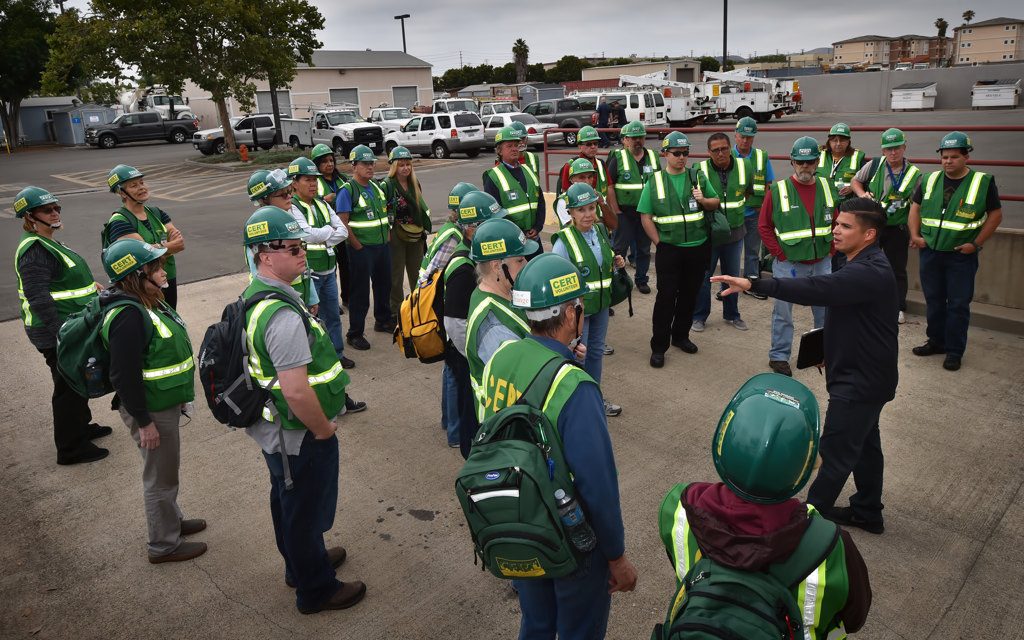
Anthony Gutierrez (right), an arson investigator for the Orange Fire Department and a CERT instructor, talks to CERT volunteers at the start of a recent training session.
Photo by Steven Georges/Behind the Badge OC
“There’s going to be a lot of animals and you’re going to have to be able to accommodate them,” she said.
Orange City Fire firefighter/paramedic Stephen Fan, a CERT instructor, led the session on basic tourniquet application.
“What happens if bleeding doesn’t stop?” he asked the volunteers. “We’re going to go to the tourniquet.”
He acknowledged that most people do not feel comfortable about putting on a tourniquet.
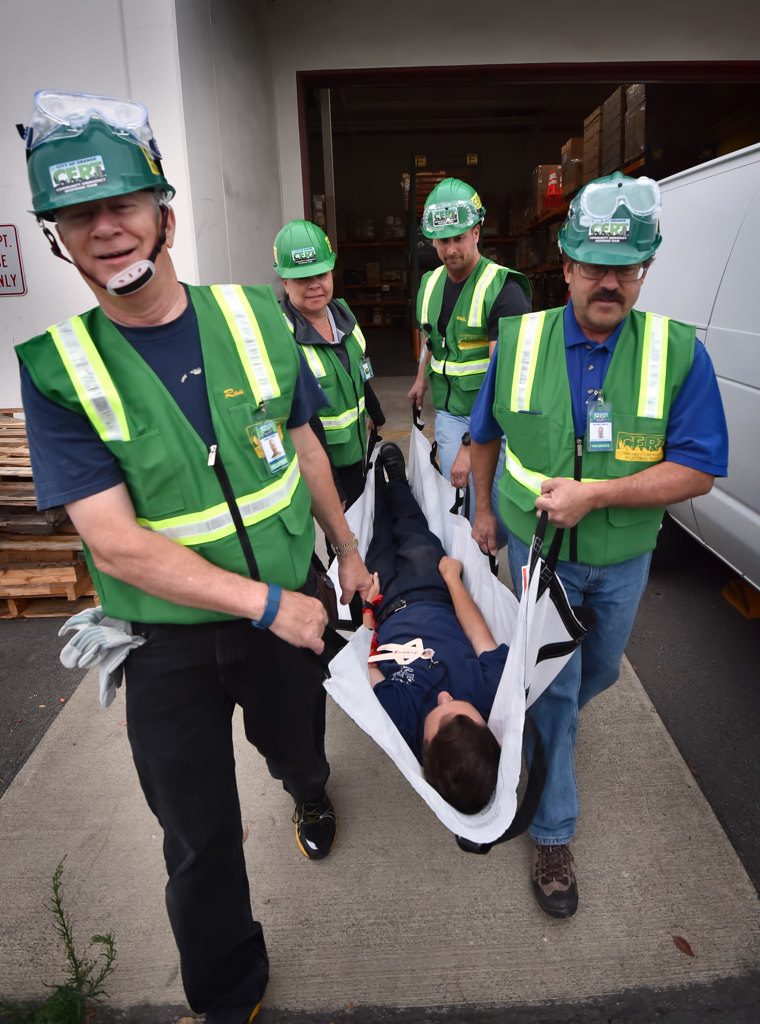
Orange CERT volunteers remove Orange Fire Explorer Parker Colton, playing the part of an injured person, from an office building during a training session.
Photo by Steven Georges/Behind the Badge OC
He asked the volunteers why they’re afraid. They responded that they worried about stopping circulation and causing gangrene.
“I don’t want you guys to be afraid of putting on a tourniquet because someone’s going to lose their arm,” Fan told the volunteers, adding that in many cases the alternative is death and many times tourniquets are needed when an extremity already has been amputated.

Orange CERT volunteers tend to “injured” people, Orange Fire Explorer Parker Colton, bottom, Orange PD Volunteer Keith Fawver and 12-year-old Cody Chastain, top, during a medical triage training session.
Photo by Steven Georges/Behind the Badge OC
With that, he demonstrated the proper way to apply a tourniquet before having the volunteers practice on each other.
As the first graduate of the CERT program, Mayor Smith told Behind the Badge that the course “exceeded my expectations.” She found the program to be very detailed, professional and helpful.
“It’s everyday skills that you can use,” she said, adding that it helps the city in a disaster situation because these are trained volunteers city and public safety workers can rely on. “It makes us a safer community.”
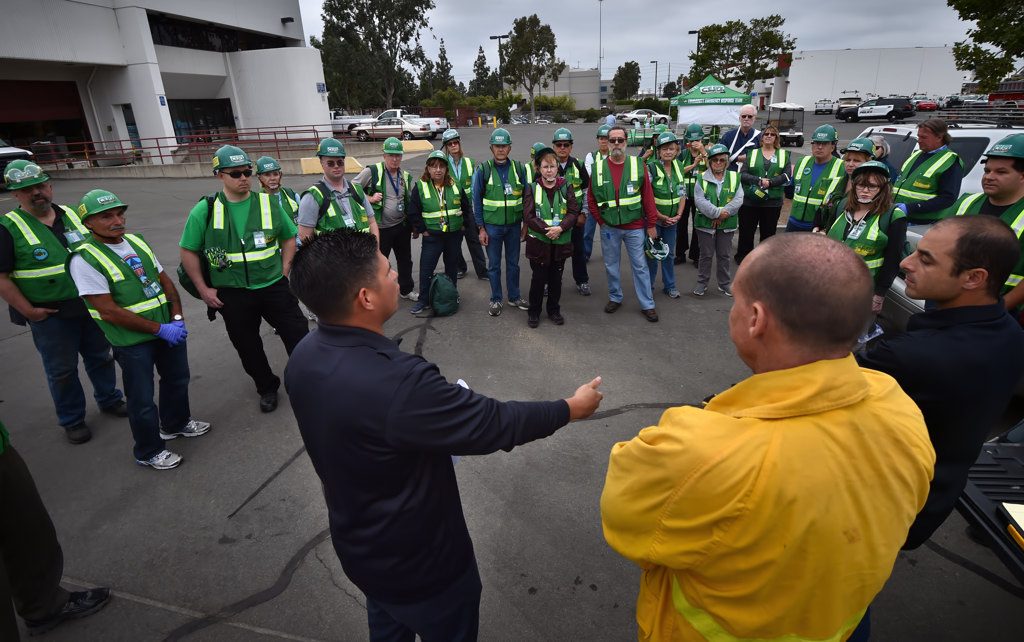
Anthony Gutierrez, an arson investigator for the Orange Fire Department and a CERT instructor, goes over how each team did after a CERT training session.
Photo by Steven Georges/Behind the Badge OC
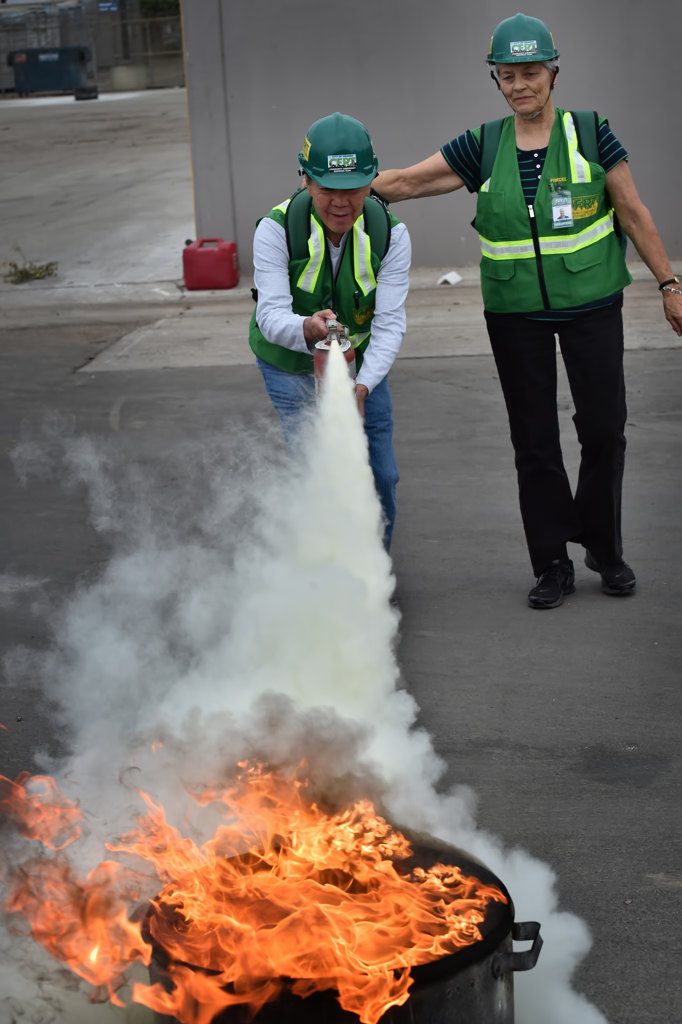
Orange CERT volunteers Jeff Wong, left, and Friedel Borges put out a test fire.
Photo by Steven Georges/Behind the Badge OC
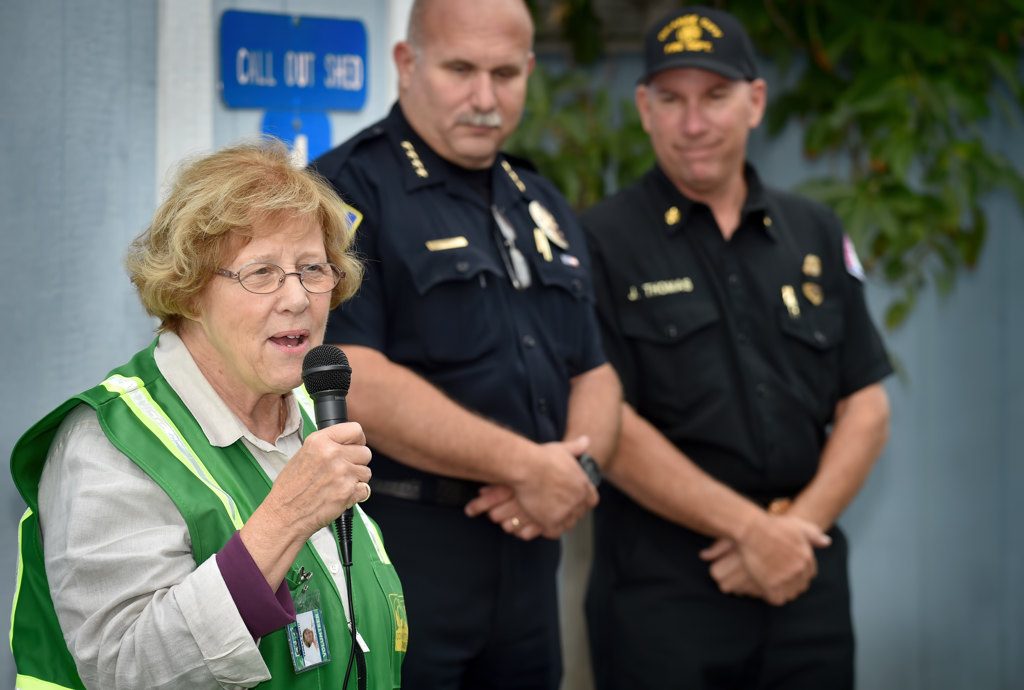
Orange Mayor Teresa “Tita” Smith, a CERT volunteer, talks about the invaluable service CERT volunteers provide to the city. Behind her is Orange Police Chief Thomas Kisela and Orange Fire Chief Jack Thomas, right.
Photo by Steven Georges/Behind the Badge OC
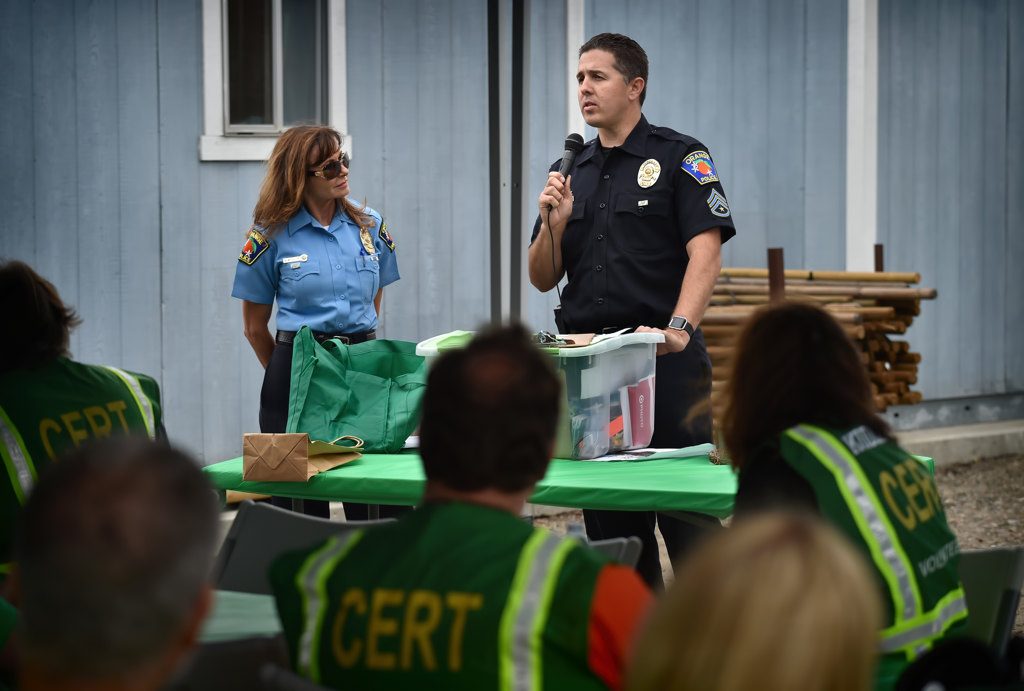
Orange PD Sgt. Phil McMullin talks to CERT volunteers, with Orange PD Crime Prevention Specialist Michelle Micallef, left, as they gather for a CERT training session.
Photo by Steven Georges/Behind the Badge OC
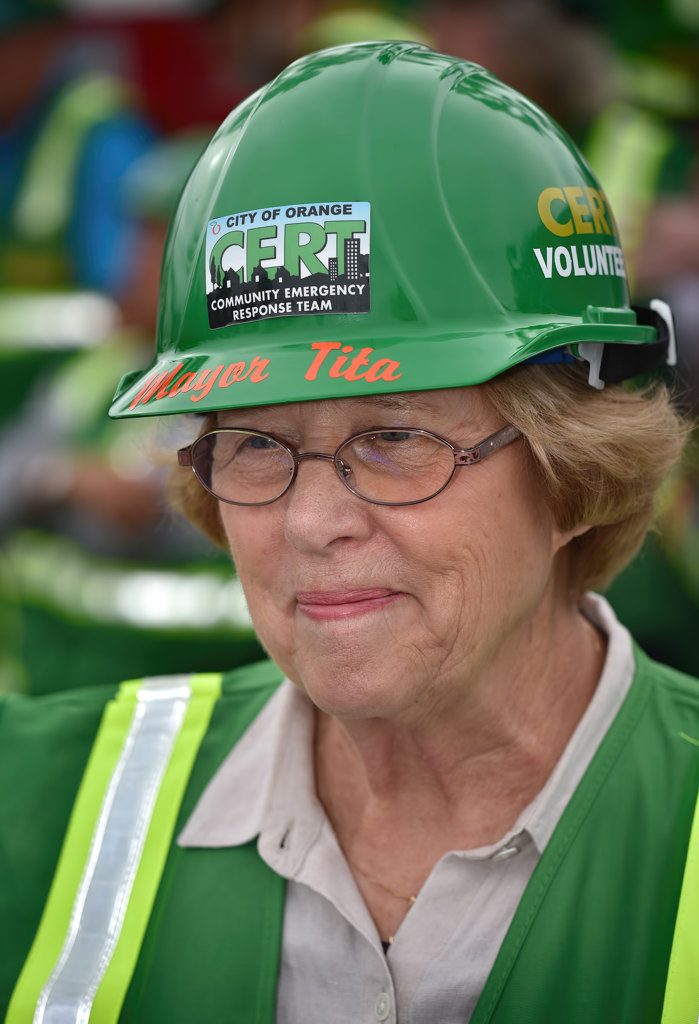
City of Orange Mayor and CERT volunteer Teresa “Tita” Smith gathers with other CERT volunteers as CERT of Orange celebrates its two-year anniversary.
Photo by Steven Georges/Behind the Badge OC

Orange Fire Explorer Titus Dejong plays the part of an injured person as CERT volunteers remove office items from him during a training session.
Photo by Steven Georges/Behind the Badge OC

Orange CERT volunteer Beverly Nelson checks on Cody Chastain, 12, of Yorba Linda, as he plays the part of an injured person during a CERT medical triage training session.
Photo by Steven Georges/Behind the Badge OC
 Behind the Badge
Behind the Badge
